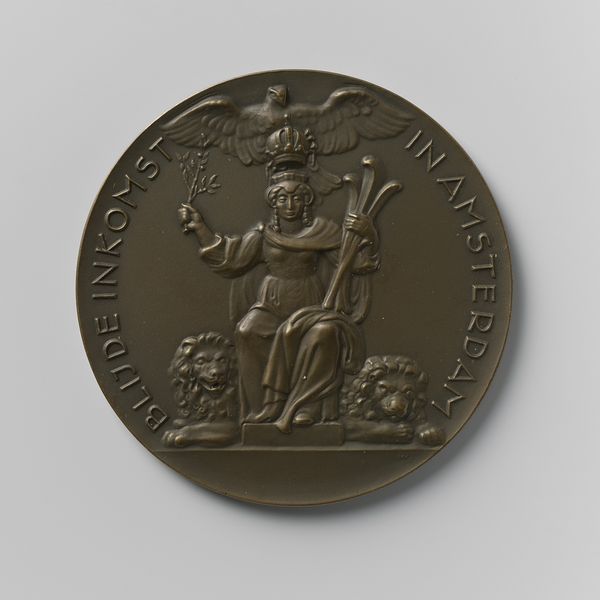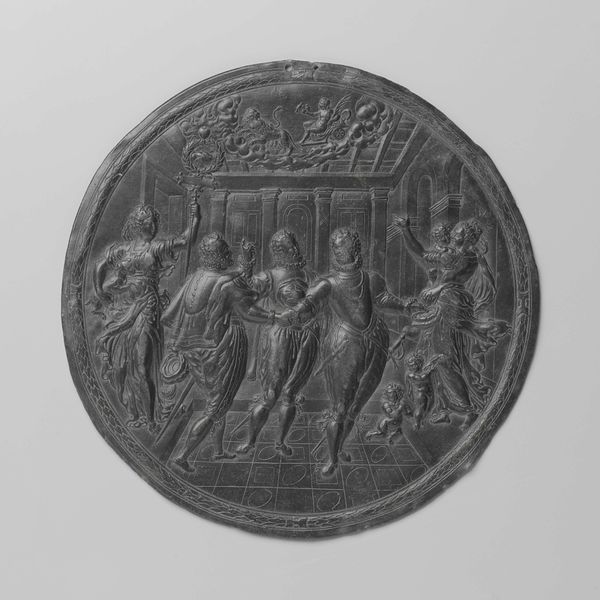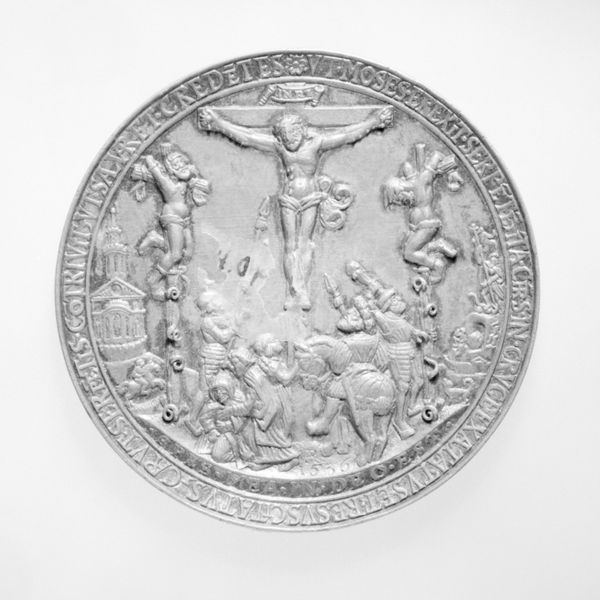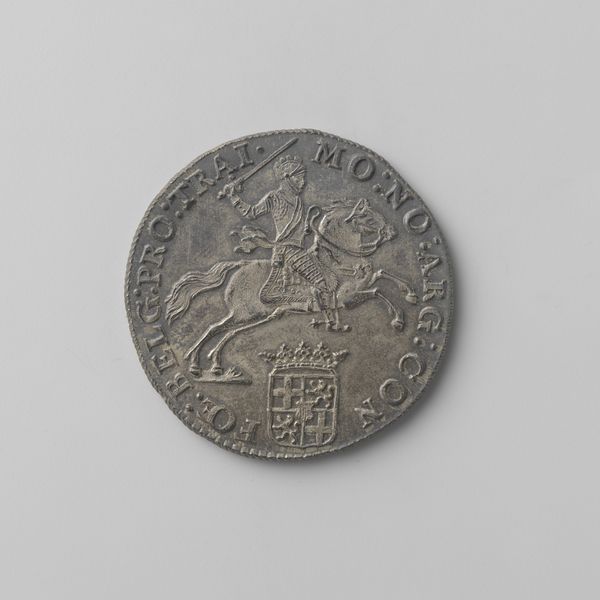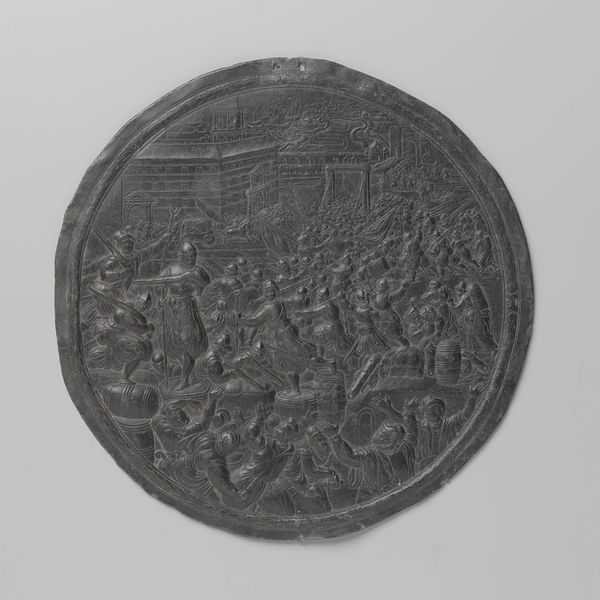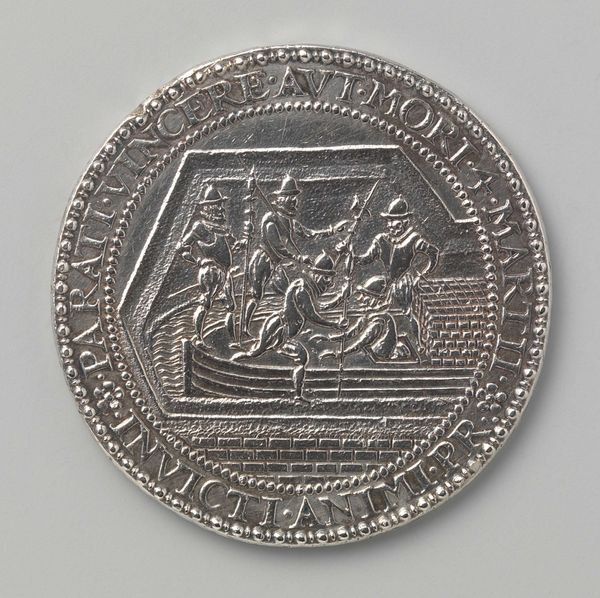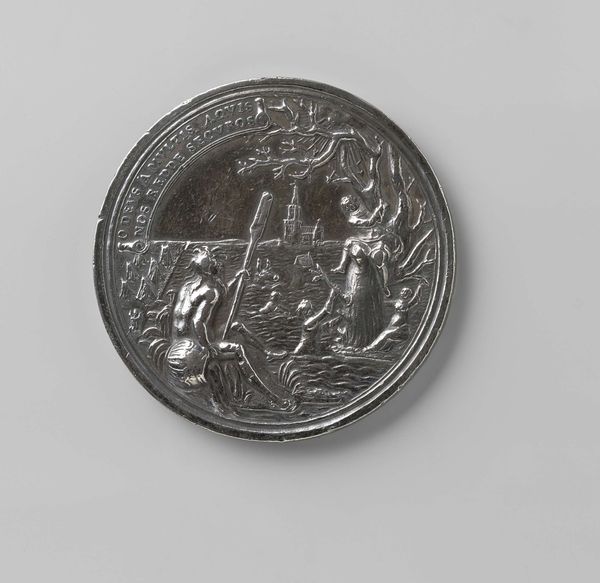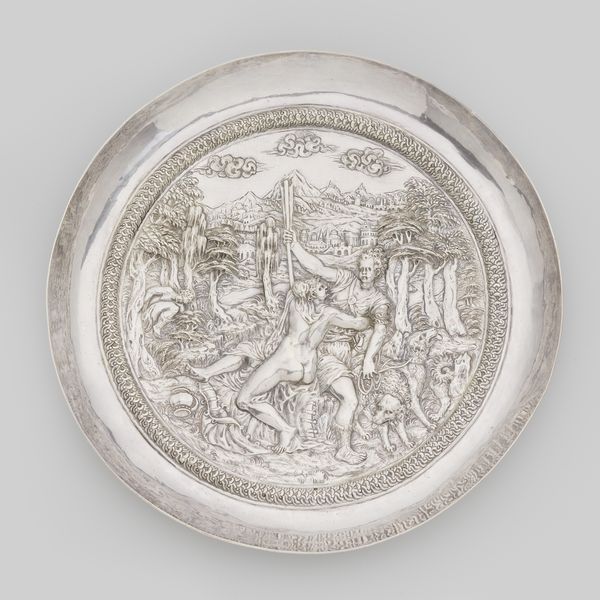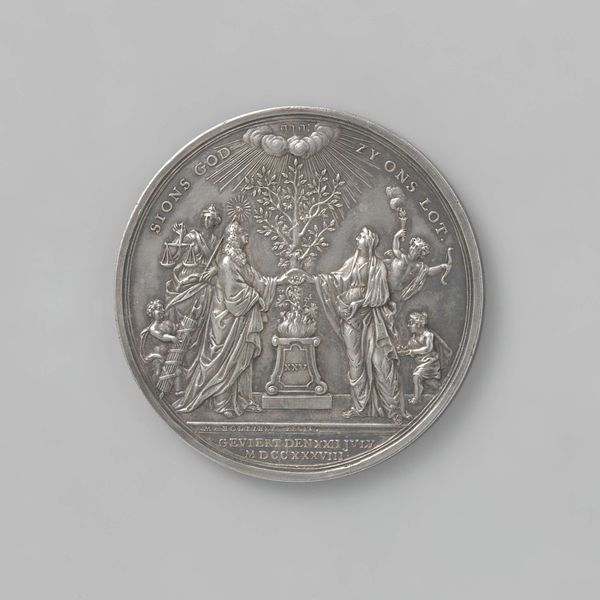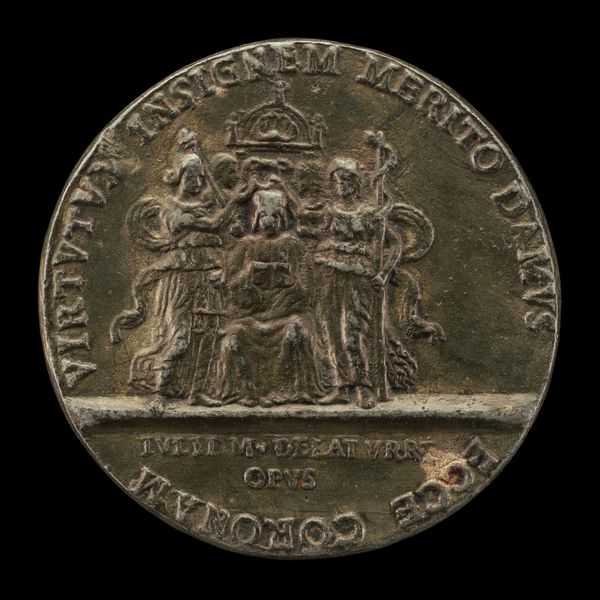
Dimensions: diameter 7.0 cm, weight 109.87 gr
Copyright: Rijks Museum: Open Domain
Editor: So, this is a metal relief titled "Opening van de Maastunnel te Rotterdam 1942," by Marinus Kutterink. The figures are rendered in this neoclassical style… it feels both monumental and a bit old-fashioned, I suppose. What stands out to you? Curator: This relief is fascinating when considered within its historical context. Think about the year: 1942. Rotterdam had been devastated by bombing just two years prior. What do you make of that timing and the triumphal nature of the piece? Editor: I guess I hadn't considered that. It feels… almost contradictory. A celebration amidst devastation? Curator: Exactly! The Maastunnel, an ambitious infrastructure project, becomes a symbol. Look at the figures – the male figure holding a hammer and the female figure with a helmet – what values might they represent within that context? And why place them with water deities, juxtaposing modernity and classicism? Editor: Okay, I see the connection. The male figure perhaps embodies hard labor and rebuilding, the female figure symbolizes resilience, or perhaps even liberty? And maybe it’s about Rotterdam asserting its strength, literally rising from the waters through engineering, against all odds. Curator: Precisely! The inclusion of these allegorical figures invites reflection on the role of public art in shaping collective memory and national identity, even during times of immense social upheaval. The relief presents a curated narrative of strength. Editor: It's unsettling how easily symbols can be deployed to obscure a much more complex and grim reality, although also somewhat understandable. Curator: Precisely. Considering how intertwined art can be with ideology allows a necessary criticality to celebratory representations of the past. Editor: Thanks, that really changed how I saw the work; it's far more nuanced now.
Comments
No comments
Be the first to comment and join the conversation on the ultimate creative platform.
